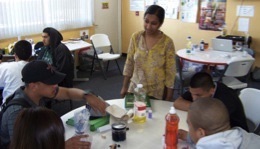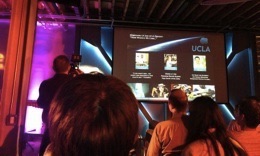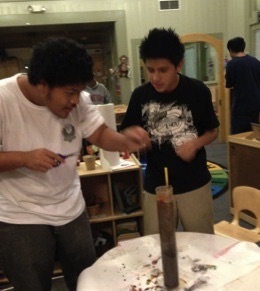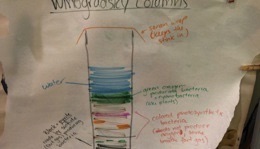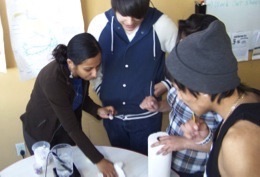Tripati Lab
Outreach
Representation of different groups in climate science, and in the geosciences as a whole, does not reflect societal demographics.
Underrepresentation of people of color, women of color, and women in general, worsens up the career ladder in the geosciences.
Several consequences are predicted to arise from a mismatch between the changing demographics of U.S. society and higher education in STEM fields, with negative consequences for the scientific, economic, and social well-being of society.
Without public engagement and outreach, as national population demographics change, there may be a reduction in geoscience enrollments that could damage university departments, the research community, and the general workforce – and therefore society as a whole.
There is the danger that geoscience and other STEM fields may trend towards being perceived as irrelevant or invisible by a large proportion of the population, which could affect our ability to raise the support needed for scientific research and education.
Perhaps the worst potential effect is the loss of intellectual “capital” – bright young people whose skills, talents, and perspectives are needed by many sectors of society: in industry, by the research community, and the educational system.

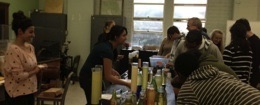
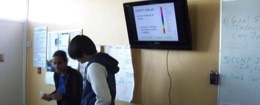
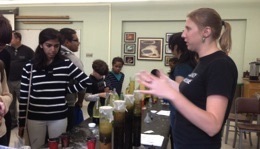
Our efforts are focused on
• Promoting diversity in the geosciences and more generally in STEM (science, technology, engineering, mathematics) through outreach and mentorship
• Media communication to reach out to the general public
• Communicating the societal relevance of scientific inquiry
• Encouraging and enabling bright students from a range of backgrounds to focus on scientific careers to address pressing questions
• Discussing climate change with various groups including business leaders
Specific activities
• Making research opportunities available for promising junior scientists from a range of under-represented backgrounds (including mature students and researchers, ethnic minorities, low-income students, gay students, single parents, and low-income students). My main focus has been on recruiting outstanding women into science.
• I created the ACCESS program as a pipeline for recruiting bright undergraduates from diverse backgrounds at UCLA and other universities to graduate programs in geoscience and chemistry.
• My group and I work with high school students on research projects.
• I conduct hands-on geoscience demonstrations at Central High School (United American Indian Involvement, Inc.) in downtown Los Angeles, and at Markham Middle School in Watts. I also organize a group of volunteers to help with the latter, through a program an undergraduate (Brittany Miles) and I created called “Education and Empowerment through the Earth Sciences.”
• At UCLA, I’ve given a talk to SACNAS on “How to get from here to there in academia when life keeps cropping up along the way.”
• I do hands-on science demonstrations with young people in transitional housing.
• At UCLA, I have organized workshops and given talks on applying for graduate and postdoctoral fellowships.
• I developed an annual General Education Oceanography student film festival at UCLA as part of the “Blue Planet” course I teach. Students from a range of different majors are enrolled in the course, and have to submit science communication projects. The winning student videos are online at http://www.youtube.com/watch?v=J9WitGJvLJs&list=PL1UEJdZ1r6RmdVdfoeWBCcFXFR26lVND3 and are circulated to K-12 science educators. One of my students videos has >14,000 hits!
• My group and I create exhibits and conduct hands-on geoscience demonstrations with my group at UCLA’s annual Physical Sciences Outreach Day that bring a few thousand people to our campus.
• I work with undergraduates to develop lesson plans for K-12 teachers.
• My group and I work with high school teachers on research.
• I actively encourage members of my group to serve as community-oriented role models themselves by participating in outreach efforts at local schools.
• A colleague and I have written a lesson plan for secondary school students on “Fossils and climate change” focused on understanding the climate history of Antarctica and Nebraska for the past 160 million years using the fossil record, and we taught lesson at Lexington Middle School.
• I am a mentor for NSF-supported MSPHDS program (Minorities Striving to Pursue Higher Degrees of Success in Earth System Science).
• With the Association for Black Women in Higher Education, I’ve given talks on applying for grants and writing academic papers.
• I co-developed a UCLA Mindshare public outreach event for the Division of Physical Sciences with Douglas Campbell, the co-founder of Mindshare. This was a geoscience cafe (think TedX meets Burning Man!) that featured a series of talks by departmental faculty and exhibits by members of our department, as well as art installations. 200-300 people attended the event, and several thousand people watched the event online.
• For the Royal Society of Chemistry, I’ve given a talk on careers in geochemistry to high school-age kids and their parents entitled “What Chemistry has done for me.”
• I am a UCLA Press Office contact and member of Union of Concerned Scientists ‘Climate Rapid Response Team” to discuss climate change issues with the media. I have been interviewed by Fiji TV, radio, print, Time magazine, the BBC news, the Xinhua News Agency, the Discovery Channel, and the Cambridge Evening News about my research, as well as climate change.
• In the UK, I was a role model for the Engineering and Physical Sciences Council’s “New Outlooks in Science and Engineering” program which among other things, resulted in my involvement in local outreach events.
• While in the UK, I participated in “I’m a scientist, get me out of here,” a reality show for scientists which involved engaging high-school age kids, participating in online discussions with three classes over the course of a month. Based on our answers to their questions, we got voted out of a virtual house. I came in third place!
•I was a participant in “Geoscience fundamentals in the field” course (3 weeks long) that focused on scientific principles, practices, and pedagogical methods illustrated through geological field work for middle and high school teachers.
• At the Intel Science Fair, I was a science fair judge for the American Geological Institute at Intel Science Fair.
• I gave lectures to executives on climate change as part of the “Comenius” course focused on exposing them to the cutting-edge of research at leading universities worldwide.
